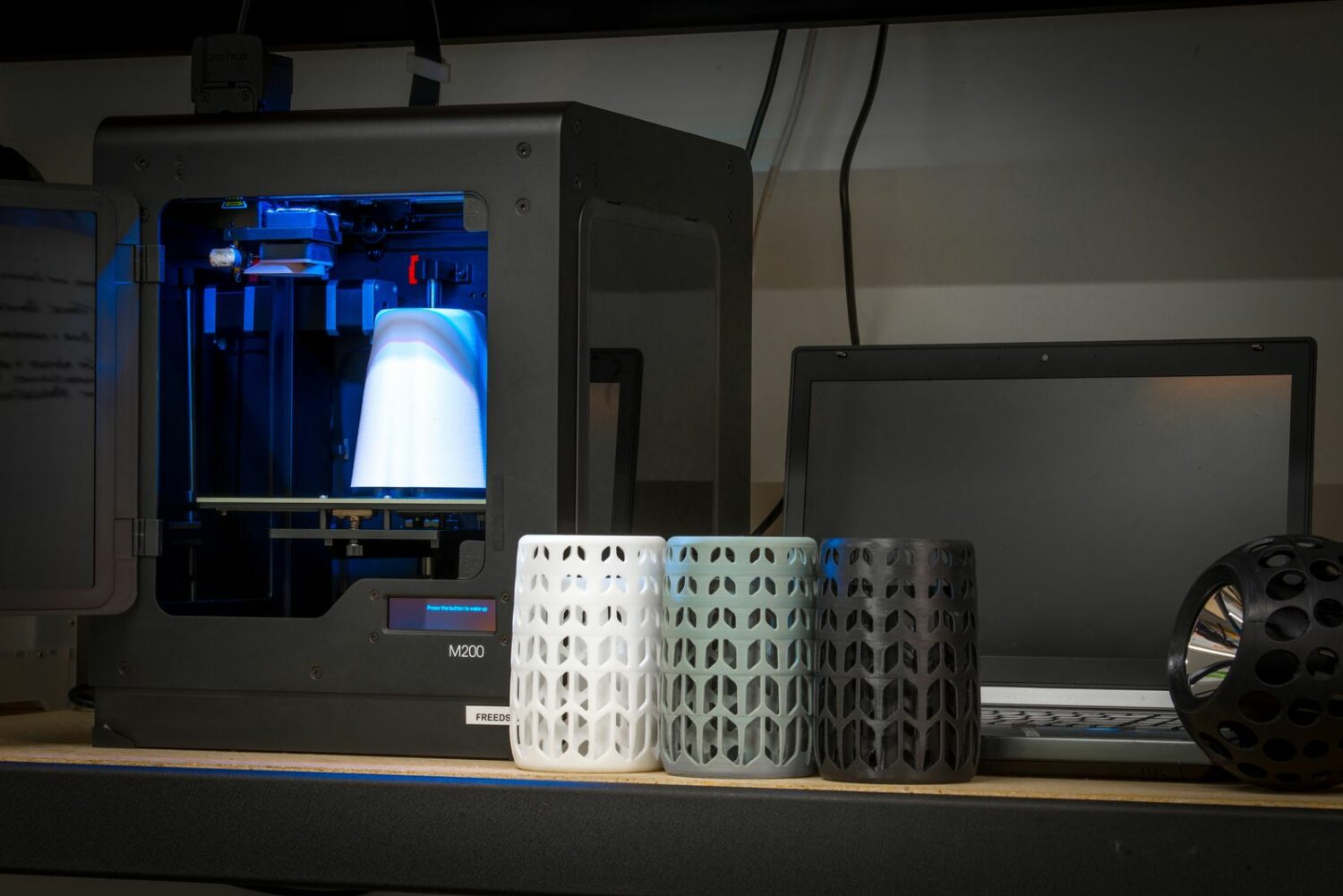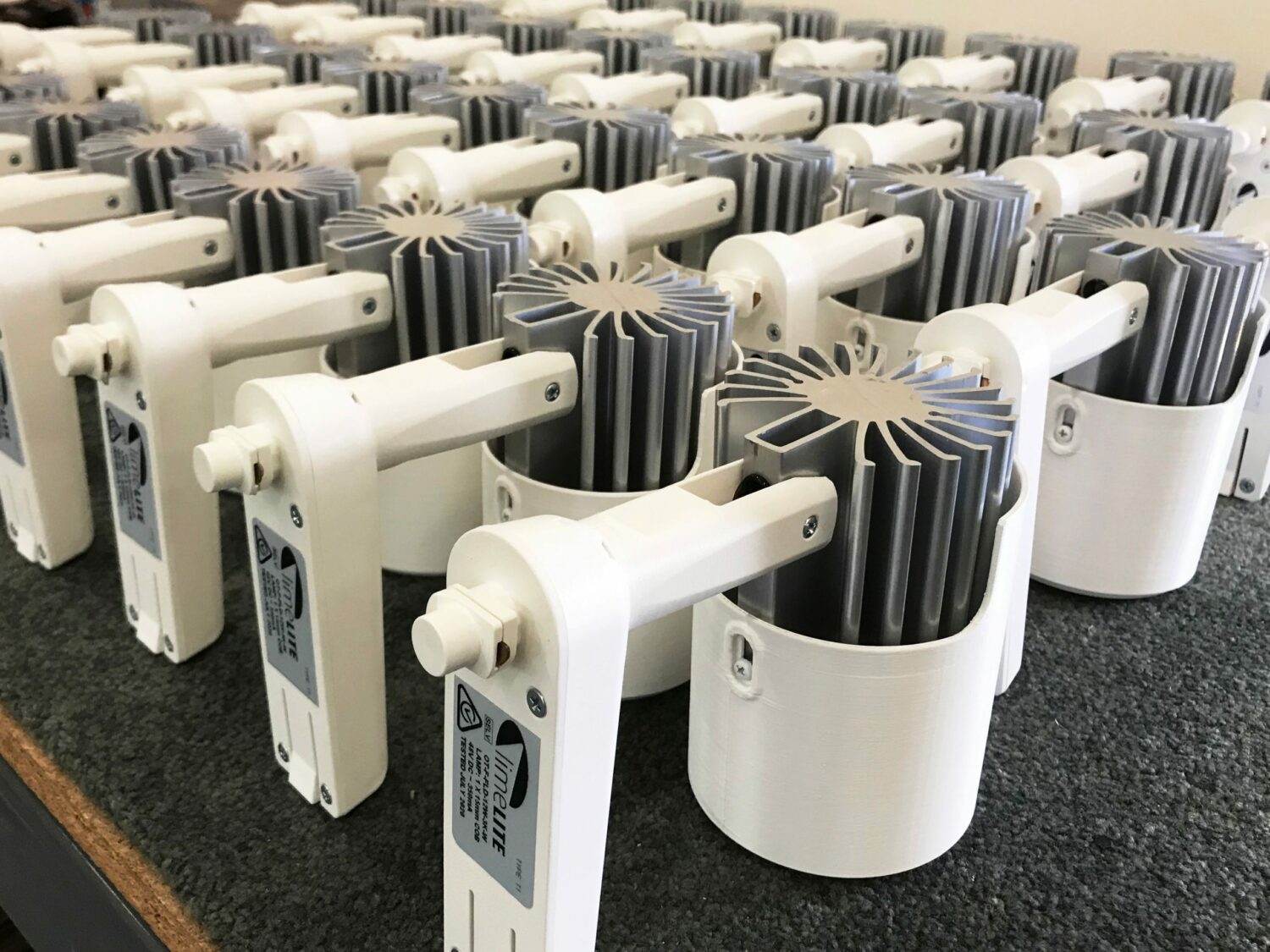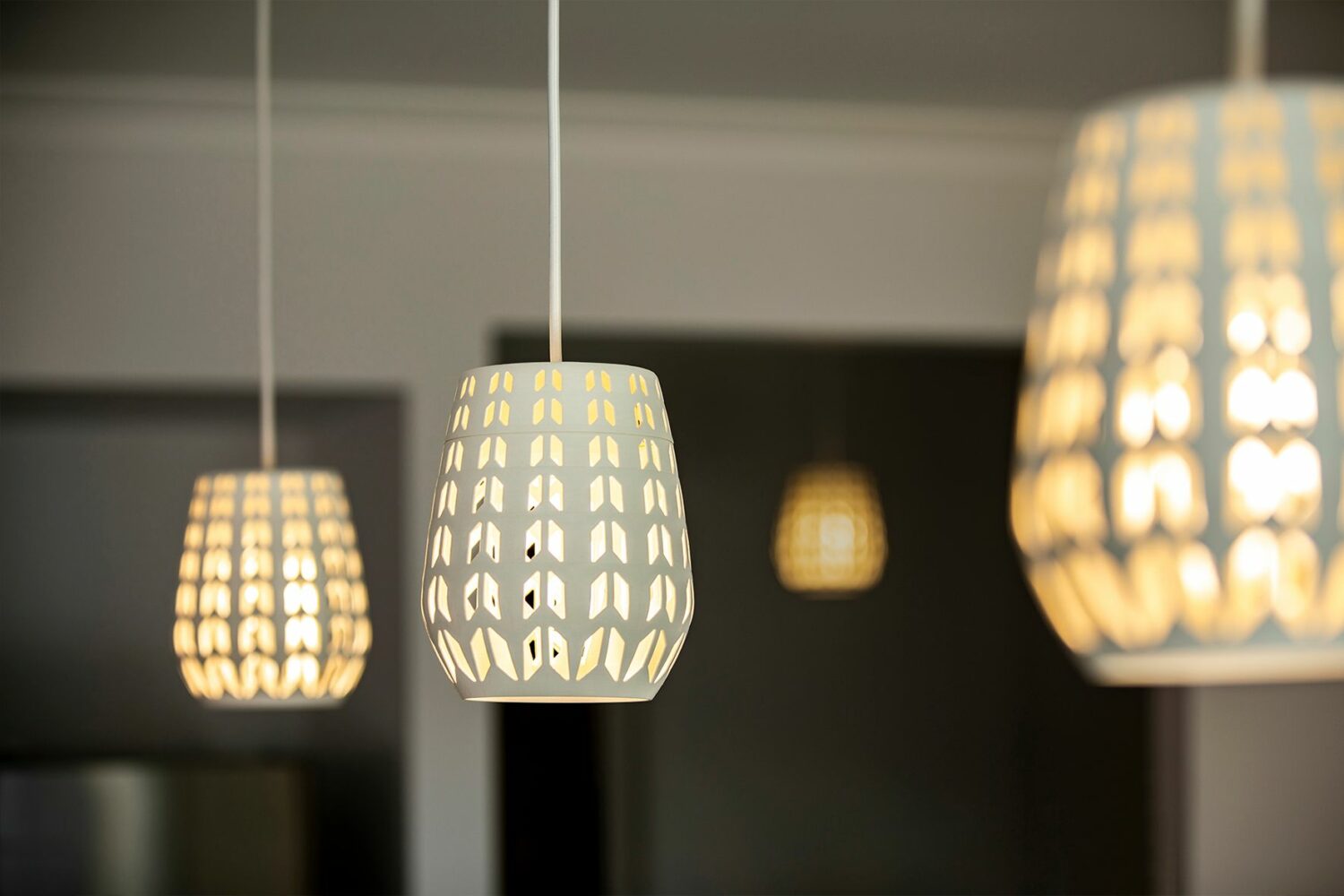Latest News

Limelite 3D Printing Hub
Australia’s first Facility for Additive Manufacture of Light Fixtures
A couple of years ago Paul Hearne, the founder of Limelite, attended a seminar on 3D printing at the Swinburne University of Technology. All of a sudden, Paul realized the flexibility offered by additive technologies could help build more customized luminaires at a lower cost and with great added value, in contrast to having them fabricated in traditional ways.
What began as a premature discovery ended up in a restructuring of his company, including an expansion of his facilities and the appointment of a specialized internal design and manufacturing team. Ultimately, Limelite moved from a project lighting company advising end-users on the lighting solutions of their needs, to an advanced 3D manufacturing business in only a few short years. From ‘selling fixtures made by others’ to create their own range of ‘customized 3D printed luminaires’.
To make change happen, Paul and his design team – led by his Chief Designer Nigel Brockbank – launched a joint project with industrial designers working at Swinburne University. As a result, the ‘On Track’ lighting collection was born, the first lighting Limelite range that was almost entirely 3D printed. The ‘On Track’ range was designed for additive manufacturing from scratch. After the moment the first 3D printed Luminaires hit the market, Limelite started to expand its 3D printing operations. At the moment of writing, it includes the production of three collections of Luminaires along with custom-made jigs supporting Limelite’s traditional manufacturing plants.

LimeLite 3D Printing Hub
The Limelite investment in their own 3D Printing Hub was intended to achieve a number of goals.
First, the aim was to expand its business into the decorative lighting market, while still offering the commercial smarts. To date, Limelite had experience in providing standardized lighting solutions for educational buildings and medical facilities. Decorative lighting was a different story because the Luminaires had to fit skillfully designed interiors of aged care, offices, schools, hotels or cafes. Apart from getting the design right, the traditional manufacturing costs in this field proved to be higher as the 3D printed decorative lighting range and now also offer a much greater variety.
Secondly, Paul and his team realized that through the application of 3D Printing technologies, Limelite would get access to a range of unique features and benefits that were not available through conventional fabrication, such as molding technology. This would add significant value for the company and its customer base. In the section here after, we break them down for you in more detail.
Finally, growing a ‘future-proof-company’ requires some serious ‘forward-thinking’. Paul and his team believe that the future of fabrication is vastly different from today. 3D Printing will change the way products are designed, fabricated and transported. Limelite is about the ‘localization’ of manufacturing. With their innovations in the advanced manufacture with 3D printing as a process, they aim to create “Point of difference” luminaires. Limelite has found a creative and scalable way of doing business, utilizing ‘Industry 4.0 Thinking’ with a just-in-time methodology.

By setting up the 3D Printing Hub, Limelite got access to a range of interesting benefits, that put them in a unique competitive edge in the lighting market. While allowing tremendous flexibility of design, 3D printing also gives the business a number of very practical benefits. Let’s breakdown some of the advantages they now have access to in relation to their business:
On-Demand Production: While injection molding is obviously faster, speed is not critical in decorative lighting. Making thousands of luminaires in a week rather than in a couple of months is easily possible, but then you are also forced to keep stock and pay for it. With 3D printing on-site, production is closely matched to demand. Limelite makes the luminaires after the orders come in. At the end of the day, using 3D printers for production is cheaper than injection molding, when tooling and storage costs are included.
Enhanced Customization: Customization of Light Fittings. Customers buying Limelite luminaires can ask for slightly ‘tweaked’ designs. For example, if a luminaire has a visible heat sink at the back and the customer wants it covered, that’s easily doable with only a small design change. With traditional manufacturing technologies, they would have to pay for retooling just to make the housing longer to cover the heat sink. With 3D printing the design could be adjusted in a couple of hours and printed accordingly.
Easy Design Iterations: Absorbing and implementing new technologies that appear on the lighting market brings along challenges in design. To give an example: if a next-gen light sensor comes to the scene, and it needs to be incorporated in the design, integrating this new sensor would take weeks or months if it had to be done with injection molding. With 3D printers, we could integrate this sensor in days.
No Tooling/Inventory: In fact, Limelite has no costs for tooling and storage. Typically, both 3D printing and injection molding are used for production. Standardized parts, like the ones with which a pendant fixture that’s attached to a ceiling, are injection molded. Decorative elements that bring out a particular style of the lamp are 3D printed. For the initial one, dozens if not hundreds of parts need to be sourced, components for the latter one can be produced to demand.
No-post Processing Needed: At this point, Limelite does not use any post-processing for their 3D printed luminaires. They are happy with the quality of surfaces and consistency of the 3D printers, and decided to use the fine detail layering of the print process as a ‘design gift’. Currently, they see no reasons for post-processing the physical, but it is not to say it is not going to change in the future when further optimizations can be done or value can be added.
Shortened Cycle Times: With the 3D Printing Hub in house, it takes 3 days to go from a sketch to a functional luminaire. Roughly, Limelite’s Hub can produce roughly 20 fixtures a day. Typically, from the 30 available 3D printers, 20 are used for production while 10 are busy running new prototype lamps, jigs and components for conventional products. This baseload can be scaled up overnight to meet increased demand. Limelite has designed room in its Hub for over 150 printers, designing for the future.
Easy Assembly: Also, the assembly can be significantly eased. It’s possible for to produce parts that simply clip into each other so there is no need for using glues or screws to put them together. In the assembly, the entire process turned out to be quite cost-effective. Additionally, this can also reduce assembly fatigue on staff, improving workplace health and safety too.
Cost-Efficiency: Last but not least: 3D printers allow them to achieve designs that are difficult or downright impossible to achieve with injection molding technology. With the lack of storage and tooling costs, 3D printed lamps are price-competitive. Although added value remains the primary driver, having moderate pricing for exclusive products is a welcome additional benefit. It all helps Limelite to compete and win against low-priced imports while giving our customers unique designs and better quality in the bargain. A true win-win scenario!
Original Article by Marco de Visser: https://www.3dprinting.lighting/limelite-3d-printing-hub/







